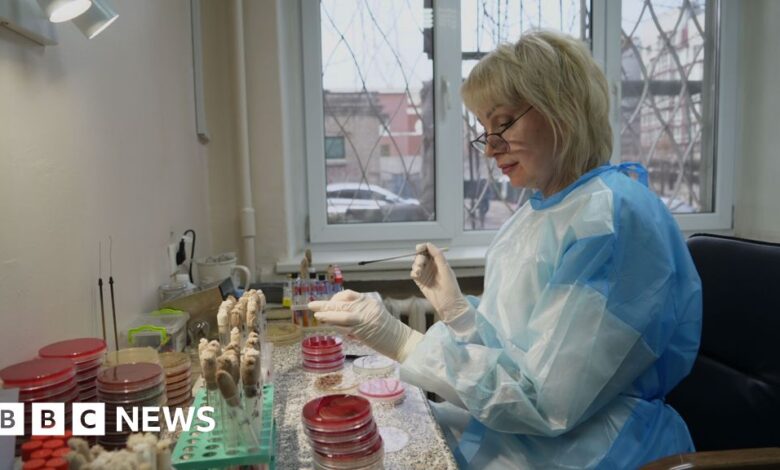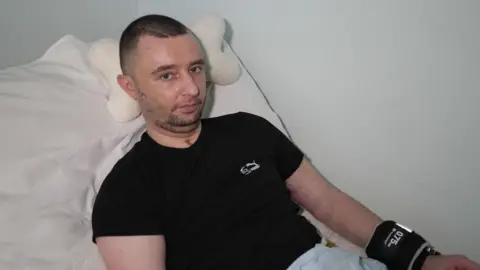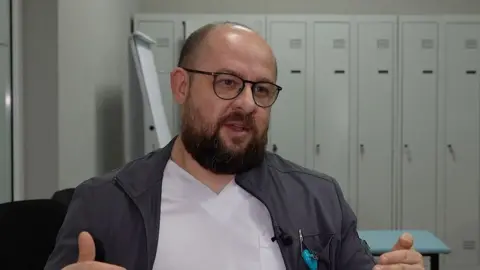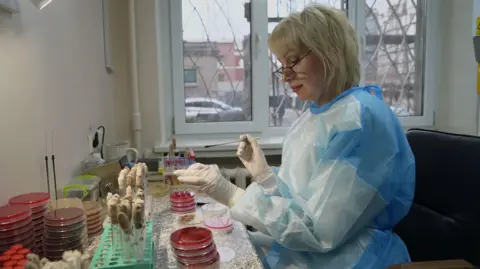Dangerous drug-resistant bacteria are spreading in Ukraine

 BBC
BBCWhen Pte Oleksander Bezverkhny was evacuated to Feofaniya Hospital in Kyiv, few believed he would live. The 27-year-old man suffered severe abdominal injuries and shrapnel ripped through his buttocks. Both of his legs were amputated.
Then doctors discovered that his infection was resistant to common antibiotics – and the already difficult task of saving his life became almost hopeless.
Antibiotic resistance (AMR) is when bacteria evolve and learn to protect themselves against antibiotics and other drugs, rendering them ineffective.
Ukraine is not the only country affected by this problem: around 1.4 million people globally died from AMR infections in 2021, and in the UK there were 66,730 serious antibiotic-resistant infections in 2023. However, the war appears to have accelerated the spread of the disease. multidrug-resistant pathogens in Ukraine.
Clinics treating war wounds have recorded a sharp increase in AMR cases. According to deputy physician Dr. Andriy Strokan, more than 80% of patients admitted to Feofaniya hospital have infections caused by antibiotic-resistant bacteria.
Ironically, drug-resistant infections often originate in medical facilities.
Medical staff try to follow strict hygiene protocols and use protective equipment to minimize the spread of these infections, but facilities can be overwhelmed with those injured in war.
Dr. Volodymyr Dubyna, head of the ICU of Mechnikov Hospital, said that since the beginning of the Russian invasion, his unit alone had increased the number of beds from 16 to 50. Meanwhile, many staff fleeing war or enlisting themselves in the army, staffing levels are decreasing.
Dr. Strokan explains that these circumstances may affect the spread of AMR bacteria. “In surgical departments, there is one nurse who takes care of 15-20 patients,” he said. “It was physically impossible for her to wash her hands in the amount and frequency necessary to not spread the infection.”

The nature of this war also means that patients are exposed to far more strains of infection than in peacetime. When a soldier is evacuated for medical reasons, they will often pass through multiple facilities, each with its own strain of AMR. While medical experts say this was inevitable given the scale of the war, it only exacerbated the spread of AMR infections.
This was the case of Pte Bezverkhny, who was treated at three different facilities before arriving at a hospital in Kyiv. Because his infection could not be treated with conventional medicine, his condition worsened and he suffered from sepsis five times.
This situation differs from other recent conflicts, such as the Afghanistan War, where Western soldiers would be stabilized in place and then airlifted to a clinic in Europe instead of traveling through many different local establishments.

According to Dr. Dubyna, whose hospital is in the frontline area neighboring Dnipro, this will not be possible in Ukraine because of an influx of patients not seen since World War II. Once his patients are stable enough, they will be transferred to another clinic – if space is available – to free up capacity.
“In terms of microbiological control, that means they spread [bacteria] furthermore. But if it is not done, we cannot work. Then it’s a disaster.”
With so many injured, Ukrainian hospitals often lack the capacity to isolate infected patients – meaning dangerous and multi-drug resistant bacteria spread unchecked.
The problem is that the infections they cause must be treated with special antibiotics on the “reserve” list. But the more often the doctor prescribes, the faster the bacteria adapt, making those antibiotics no longer effective.
“We have to balance our scale,” Dr. Strokan explains. “On the one hand, we must save patients. On the other – we must not create new microorganisms that are resistant to antibiotics.”

In the case of Pte Bezverkhny, doctors had to use very expensive antibiotics purchased by volunteers from abroad. After a year in the hospital and more than 100 surgeries, his condition is no longer life-threatening.
Doctors saved his life. But as pathogens become more resistant, the struggle to save others becomes more difficult.





